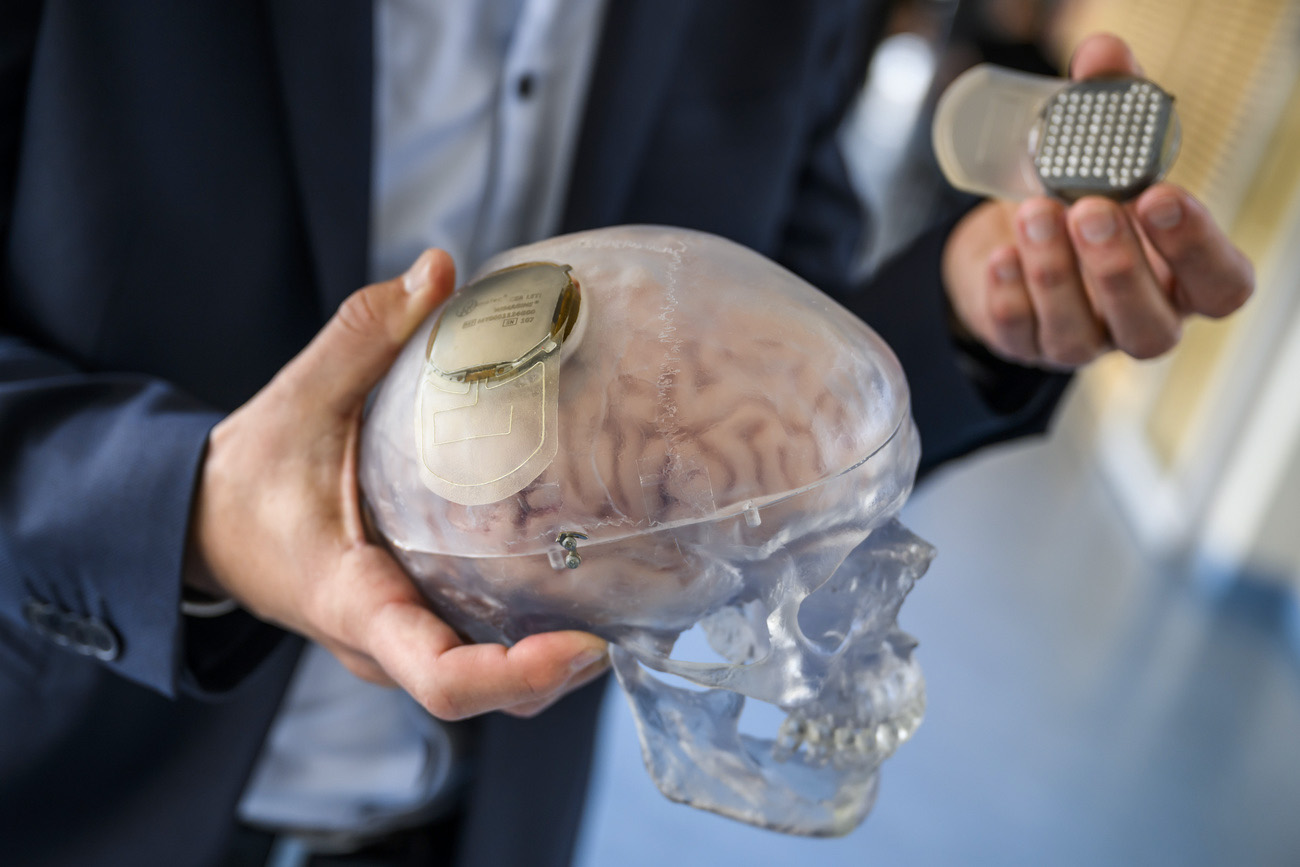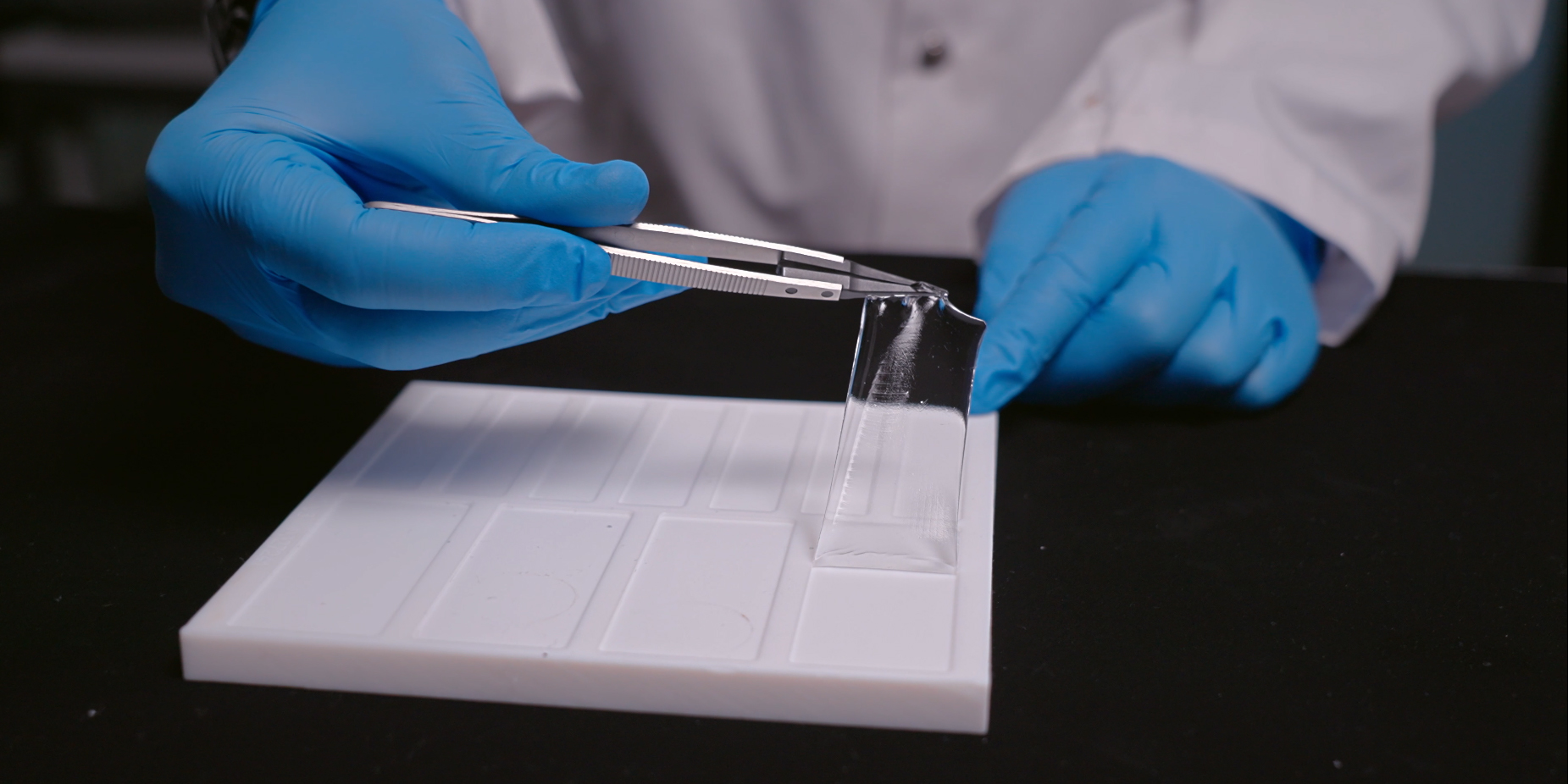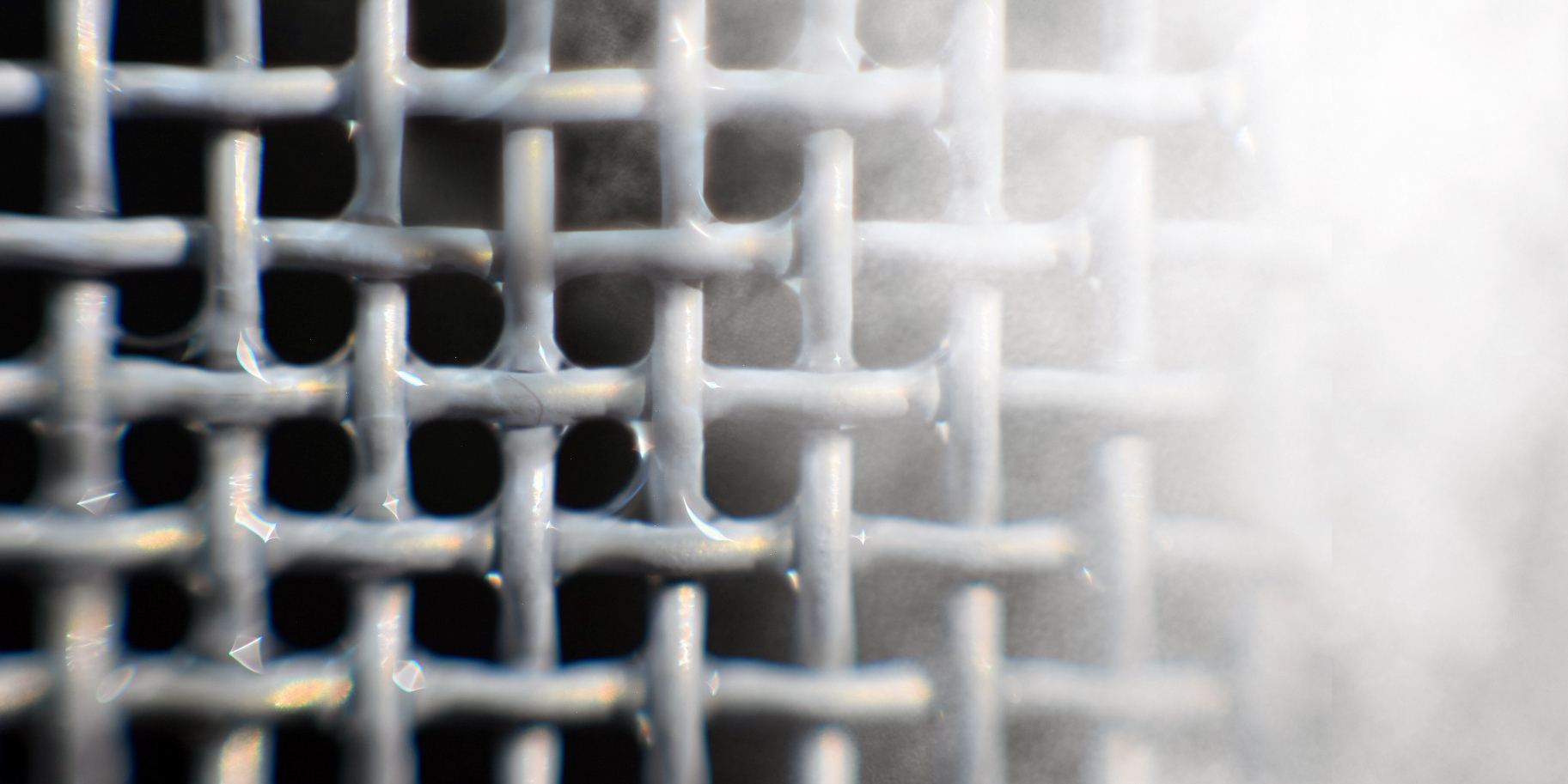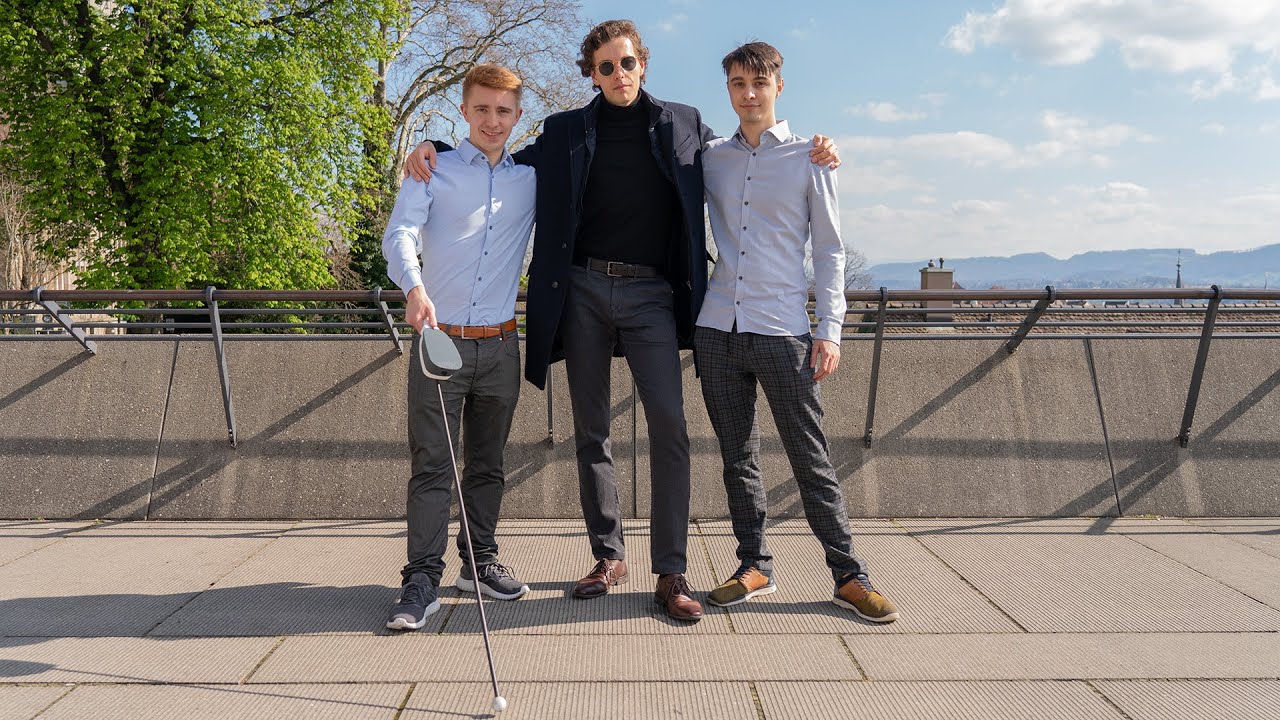Eight ground-breaking Swiss inventions of 2023

Brain-spine technology that helped a paralysed man to walk again, using chicken feathers to make electricity and a laser beam that can divert lightning are among this year’s Swiss research and innovations that could change the way we live in the years ahead.
Switzerland’s amazing natural beauty is matched by its successful academic and research sectors. Swiss universities and research institutes are among the best in the world and continue to attract a growing number of talented international students (12,300 in 2020, or +17% since 2017) and scientists. The Alpine country is one of the world’s most innovative, with a reputation for excellence in science and technology. It invests 3.3% of annual GDP in research and development (2021 figure).
We picked eight Swiss-born research projects and innovations that caught our eye this year.
New materials to mend stomachs and intestines
Leaky stomach and intestine wounds can be life-threatening. Patches exist that can seal damaged tissue. But they dissolve too quickly. Now scientists in SwitzerlandExternal link and in the Czech Republic have created a patch made of special polymers that cross-link with the intestinal tissue and seal the wound. In this way, the patch prevents acidic juices and germ-laden food residues from escaping from the digestive tract and triggering inflammation or even life-threatening blood poisoning. The patch also has sensors that can send an early warning before digestive juices leak into the abdominal cavity.

A heat-resistant drone to help fight fires
Drones are already lifting fire hoses onto skyscrapers or dropping extinguishing agents in remote areas to prevent forest fires from spreading – but only at a safe distance. Inside a burning building the temperature can reach up to 1,000° Celsius. To get closer, researchers at Swiss Federal Laboratories for Materials Science and Technology (Empa) and Imperial College London have developed a heat-resistant drone, known as FireDrone, made of thermally insulating materials like glass fibres and polyimide aerogel. The aerogel was inspired by animals such as penguins and arctic foxes that live in extreme temperatures thanks to layers of fat or fur.

More
Scientists develop heat-resistant drone to help fight fires
Paralysed man walks again using thought-controlled brain-spine device
In 2011 Gert-Jan had a cycling accident that left him paralysed. Twelve years later, the 40-year-old Dutchman can stand, climb stairs and go shopping thanks to special implants in his brain and spine and wireless technology that can read his brainwaves. A brain-computer interface was implanted above the part of the brain that controls leg movement. It communicates with a spinal cord implant which sends electrical pulses to stimulate movement in leg muscles. The interface uses algorithms based on artificial intelligence methods to decode brain recordings in real time.
It sounds like science fiction but the technology devised by neuroscientists at the Swiss Federal Institute of Technology Lausanne (EPFL), Lausanne University Hospital (CHUV) and CEA, a French government-funded technological research organisation has had a major impact. “A few months ago, for the first time after ten years I was able to stand up and have a beer with my friends so that was pretty cool,” Gert-Jan says. “This simple pleasure represents a significant change in my life.”

More
Paralysed man walks again using thought-controlled brain-spine device
Swiss ‘artificial tree’ produces green hydrogen, oxygen and heat
Is it a satellite dish or telescope? No, it’s an “artificial tree”… a unique solar reactor on the EPFL campus in Lausanne that promises to overcome the high costs and transport difficulties involved in developing green hydrogen. Sunlight is reflected from the parabolic mirror and concentrated in a reactor at the focal point. Inside, the electric current generated by the sun splits water molecules into hydrogen and oxygen – in a process similar to photosynthesis in trees and plants.
The demonstrator system rotates and follows the sun to maximise output. It can produce hydrogen even in cloudy weather or at night by connecting to an external source of electricity. Its developers claim it has a higher efficiency than conventional green hydrogen production plants, which run on solar or hydropower.
The EPFL start-up SoHHytecExternal link is working with a Swiss firm to build a demonstration plant that will produce hydrogen for metal annealing processes, oxygen for nearby hospitals, and heat for the factory’s hot water needs.

More
‘Artificial tree’ from Switzerland to produce green hydrogen
Laser beam pointed into sky deflect lightning strikes
Researchers used a high-powered laser beam aimed at the sky in the Appenzell Alps in north-eastern Switzerland to divert lightning strikes. In experiments, their laser emitted pulses – 1,000 times a second. Four lighting strikes were successfully intercepted. This concept, first proposed in the 1970s, has worked in laboratory conditions, but until now not in the field. “Our work represents an important step forward in developing laser-based lightning protection for critical infrastructure such as airports, launch pads and power stations,” said Jean-Pierre Wolf of the University of Geneva. Lightning causes billions of dollars in damage on buildings, communication systems, power lines and electrical equipment annually. It also kills thousands of people.

More
High-powered laser deflects lightning strikes
Coated mesh harvests and cleans water from fog
“Fog collectors” – small fine-meshed nets – are already used in arid countries like Peru, Bolivia, Chile, Morocco and Oman to collect small droplets of fog that transforms into several hundred litres of water a day. But dirt and pollution are also captured during this process and the untreated water can’t be used for drinking or cooking.
Researchers in Switzerland have now developedExternal link a specially coated metal mesh that can extract water from fog and simultaneously purify it. The metal wire is coated with a mixture of polymers and titanium dioxide. This acts as a chemical catalyst, breaking down the molecules of many of the organic pollutants in the droplets to render them harmless. The technology needs little or no maintenance. And no energy is required except for a small but regular dose of ultraviolet light to regenerate the catalyst.

More
Researchers turn fog into clean water
Chicken feathers used to generate electricity
Each year, 40 million tonnes of chicken feathers are incinerated worldwide. This releases lots of carbon dioxide but also produces toxic gases such as sulphur dioxide. But what if the feathers could be put to a good use? Scientists at the federal technology institute ETH Zurich and Nanyang Technological University Singapore have now found a solutionExternal link: extracting the protein keratin and converting it into ultra-fine fibres known as amyloid fibrils that can be used in the membrane of a fuel cell.
At the heart of every fuel cell lies a semipermeable membrane. It allows protons to pass through but blocks electrons, forcing them to flow through an external circuit from the negatively charged anode to the positively charged cathode, thereby producing an electric current. In conventional fuel cells, these membranes are typically made with highly toxic chemicals, which are expensive and don’t break down in the environment. The “chicken feather” membrane, on the other hand, consists mainly of biological keratin, which is environmentally compatible and available in large quantities.

A ‘smart cane’ for the blind and visually impaired
Three ETH Zurich students have developed a hi-tech white cane that can help blind and visually impaired people better navigate their way safely. A camera and sensors provide haptic feedback, or vibration patterns. It scans the ground and indicates the direction in which an individual should walk to avoid obstacles and the vibrations communicate whether they are standing in front of a door, pedestrian crossing or staircase, for example. “With a standard white cane, you have to feel for obstacles ahead and slowly edge yourself forwards. Our cane allows the blind user to keep moving and negotiate any obstacles naturally,” explains student Arvid Gollwitzer.


In compliance with the JTI standards
More: SWI swissinfo.ch certified by the Journalism Trust Initiative










You can find an overview of ongoing debates with our journalists here . Please join us!
If you want to start a conversation about a topic raised in this article or want to report factual errors, email us at english@swissinfo.ch.